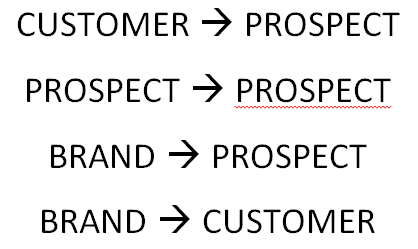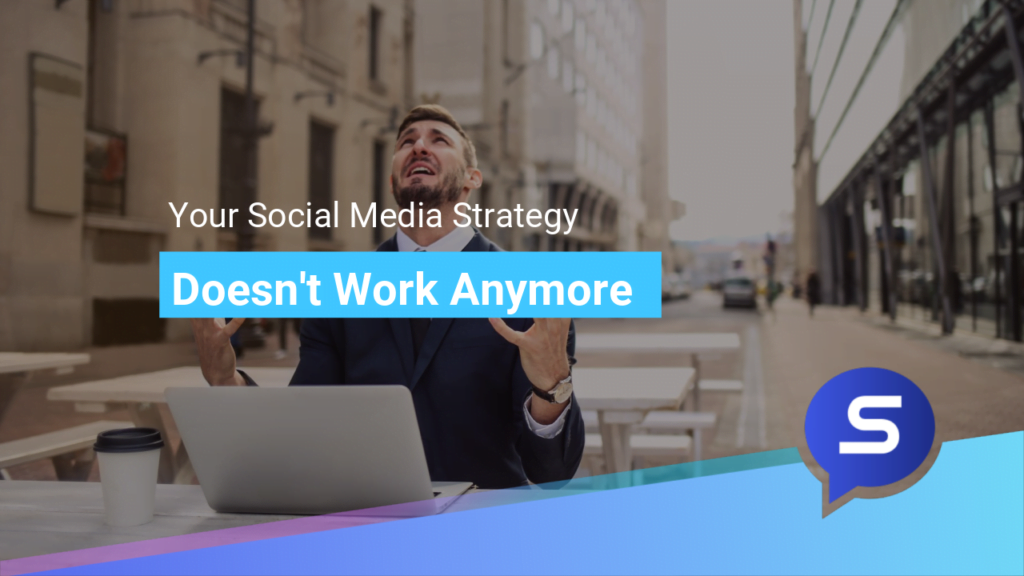
 By Craig Sherman
By Craig Sherman
This is a must-read if you or someone you are paying is spending more than an hour per week on your social media efforts
Let’s face it, Facebook, Twitter and LinkedIn are making it increasingly difficult for social media marketers to reach an audience with their content. Even your own fans & followers are only exposed to a small fraction of the posts you labor over in hopes of tapping into what you were promised when social media became a billion-person party. As paid advertising is rolled out across social networks, we can expect this trend to continue. Does that mean the era of earning a return on your time and money in social is dead? Not by a long shot. You just need to tweak your strategy a bit. Read on for your new road map.

OLD METHOD. (Does this sound familiar?)
Most social media marketers (agencies and brand marketers alike) fall into this category and most are struggling to see results as they fight the current. These marketers have pinned the majority of their hopes and efforts on direct community engagement, which looks like this:

The idea is, figure out the most compelling content your prospects are searching for and push it out to them at a time when they are most interested in consuming it. This content frequently comes in the form of a blog post followed by a series of tweets and status updates driving traffic to the blog post.
To accomplish this, these marketers have amassed an arsenal of tools, like Hootsuite, Buffer, Bitly, Google Analytics, and a host of others.
THE PROBLEM WITH THIS STRATEGY
THE NEW WAY TO OBTAIN BUSINESS RESULTS WITH SOCIAL MEDIA
Here’s an import thing to realize if you want to recapture your Facebook mojo: Facebook reach didn’t go away with the new algorithm update, it just shifted away from brands and into the hands of the friends of your target audience. Facebook decided that people want to see comments from friends instead of status updates from brands that they have ‘liked’. As a marketer, your job is to figure out how to capitalize on this shift. One way to do this is to make it easy for your existing customer base and prospects to share your brand’s information and recommendations with their friends, family and colleagues via social media. Your strategy will now looks like this:

You are going to need a new set of tools to accomplish this, or get yourself a social suite to keep everything neat and tidy under one login. Here are some innovative tactics brands are using to generate peer-to-peer sharing results:
CONCLUSION
The Facebook algorithm isn’t the end of organic social media marketing. It just provided an opportunity for you to get your brand into the news feed of your target audience while your competition works twice as hard and barely keeps their nose above water.
To stay up-to-date with social media algorithm updates, businesses should adapt to algorithm changes. Understand the shifts in platform algorithms, engage with your audience, create quality content, and use analytics to monitor performance.
To boost visibility and increase engagement, explore new strategies. Adapt to the changing social media algorithms to stay ahead. Don’t let declining organic reach discourage you, find innovative ways to connect with your audience.
To effectively utilize paid advertising on social media platforms, you need to focus on targeting your audience effectively. By understanding your target audience’s demographics, interests, and behaviors, you can create ads that resonate with them and drive results.
When it comes to user engagement and content consumption, businesses need to be aware of key behavior and preference changes. Understanding these shifts will help you adapt your social media strategy for success.
To foster authenticity and engagement on social media, build trust by being transparent, genuine, and responsive. Create a sense of community by encouraging user-generated content, hosting interactive events, and showing appreciation for your audience.
Craig Sherman is the founder and CEO of Sociamonials based in Elk Grove, California.

